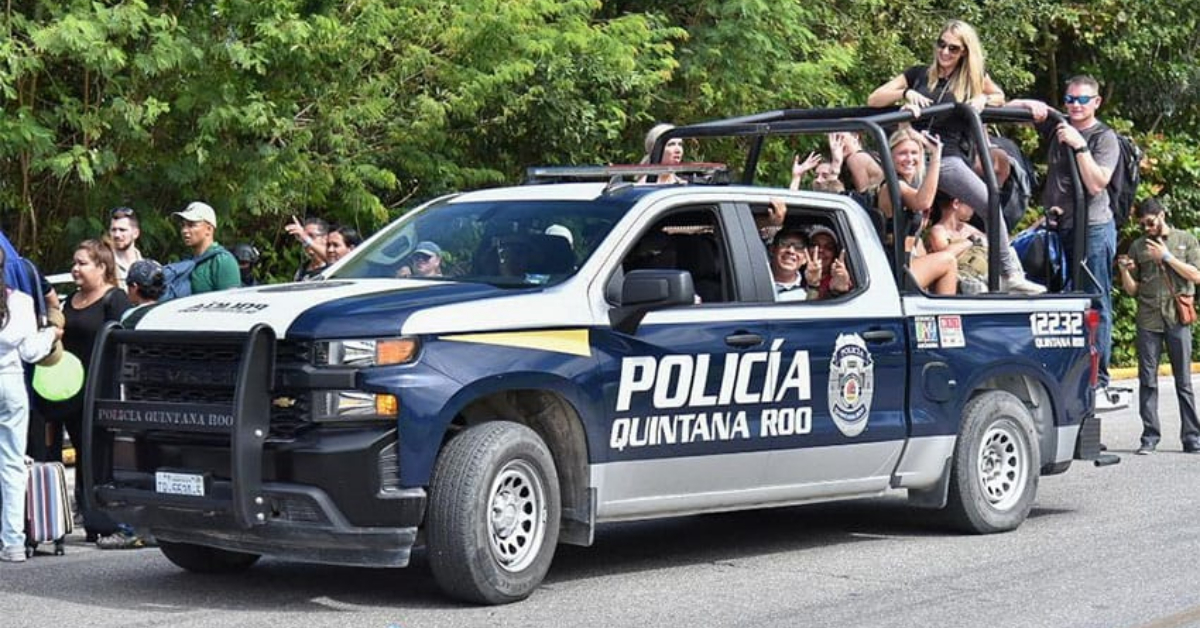Puerto Vallarta (PVDN) – A series of incidents, including taxi driver protests in Cancun while pulling Uber drivers and their passengers out of cars and beating them, and a stray bullet at the Culiacán Airport, have led foreign tourists to question whether it is safe to travel to Mexico, according to The New York Times.
The conflict between Uber drivers and a taxi union drew attention, the US media said, after a video of taxi drivers forcing a Russian-speaking family out of their car went viral when the unions had blocked the main road that leads to the hotel zone of Cancun.
In light of this, the US Embassy issued a security alert warning that similar disputes in the past turned violent.
According to Eduardo Guerrero, director of Lantia Intelligence, a security consulting firm in Mexico City, Quintana Roo authorities will try to negotiate some kind of compromise, but more violence is likely in the future.
“Taxi drivers are empowered,” he told The New York Times.
“It’s a monster.”
Asked about the extent of violence against tourists, Guerrero stated that, as a general rule, criminals in Mexico are careful not to kill tourists.
“(Doing so) can trigger a manhunt that can last for years,” he said.
However, the rule is not always fulfilled.
In two popular destinations for foreign tourists, Los Cabos and the Caribbean coast, state and local authorities have recently sought US help to combat organized crime that threatens to scare away tourists, The New York Times added.
The outlet recalls that two tourists were killed in Tulum as a result of crossfire between gangs, a shootout on a Puerto Morelos beach led tourists to seek refuge in a nearby hotel, and a hitman entered a luxury hotel in Playa del Carmen and killed two Canadian tourists believed to have ties to organized crime.
Given this situation, Guerrero explained, the Quintana Roo authorities asked US law enforcement agencies, including the FBI and DEA, to provide intelligence information.
The result was a lull in gang shootings in tourist areas, and a decline in drug dealing on the streets.
Something similar happened in Los Cabos, where US authorities also collaborated with those of Baja California Sur.
But in other states where crime is very high, The New York Times noted, tourist areas have been spared. Such is the case of San Miguel de Allende in Guanajuato, or Puerto Vallarta, Punta Mita, and Sayulita along the Vallarta-Nayarit coast.
Even in Mexico City, which has recently attracted digital nomads and short-stay visitors, concerns about violence have subsided.
The New York Times points out that in the country’s capital, the police force has managed to reduce violent crimes, particularly homicides.
However, the US media warns that street crime continues to be a problem in large cities, while theft and hijacking of vehicles are a risk in some regions.
“Many companies that serve tourists operate under threats of extortion,” the note indicates.
The story recalls that three airports in Sinaloa, including Mazatlán, were closed on January 5 due to clashes after the arrest of Ovidio Guzmán, son of Joaquín “El Chapo” Guzmán, and that a stray bullet hit an Aeroméxico plane that was preparing to take off from Culiacán without anyone being hurt.
Other violent episodes listed by the NYT are drug blockades in Guadalajara in response to a military raid in August, also the murder of a local politician in a restaurant in the suburbs of the capital city of Jalisco.
“There is too much random risk,” Pierre de Hail, president of Janus Group Mexico, a risk management firm in Monterrey, told The New York Times.
“It’s about being in the wrong place at the wrong time.”
De Hail recommends that tourists check the resort and news of the area to visit, buy travel insurance in case of medical emergency or theft, as well as keep a low profile to avoid attracting attention.
As of yesterday, six entities in Mexico, including Sinaloa, were under level 4 of the State Department’s travel alerts, which means “do not travel.”
Quintana Roo, meanwhile, was at level 2, which indicates that tourists should exercise extreme caution, but it is a level in which France and Spain are also located.
Puerto Vallarta (PVDN) - A series of incidents, including taxi driver protests in Cancun while pulling Uber drivers and their passengers out of cars and . . .












